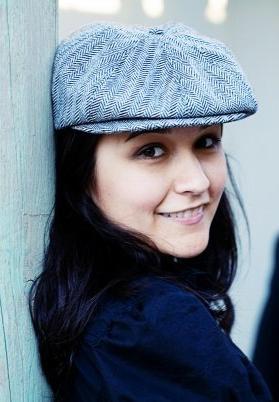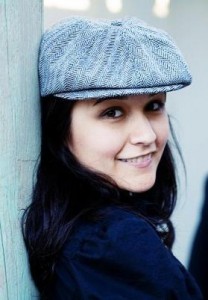When I was asked to write this article, I had no clue what to write about. My everyday life is just like everyone else’s. I go to work, eat, exercise, read, watch some television. The problem is “normal” simply exists. My normal is an unhealthy obsession with Hello Kitty and Doctor Who (separately, not together), but who doesn’t have at least one unhealthy obsession? I was about to say that these obsessions have nothing to do with my racial background–the subject of this essay–but maybe, in a way, they do. I’m mixed-race–Half White and Half Hawaiian-Filipino-Portuguese-with a smidge of Chinese. Maybe my love of Hello Kitty comes from my Asian-Pacific-Islander side and my love of Doctor Who comes from my mixed-European side. Whether my obsessions are racially based or not, you’re the weirdo for not sharing them. (Remember, this is about my normal, not yours.) But maybe I’m just like everyone else who loves disparate things in America. Either way, I grew up as a whole rather than two halves. Society, however, has made those two halves a much bigger deal than I ever could.
Growing up multi-racial was a non-issue for me as a child. In Torrance, California and its surrounding cities, the population, as well as most of my friends, was multi-racial. Within my family, racial differences came up between my two halves, but rarely was a big deal made about it. When on St. Patrick’s Day I was decked out in green and I pinched my grandmother because she didn’t have any green on, she let me know that pinching her wasn’t okay. Not because she was Tutu, but because she wasn’t Irish. Only I was. When my mom got a sunburn and I got a tan on the same afternoon, I noticed differences in our skin color. But everyone in our family had varying skin colors–the blessing and the curse of being a mixed-race family. Our differences, like “normal,” simply exist. Tan-ability or burn-ability is as normal as being tall or short.
My parents never encouraged or discouraged either race. I could dance hula if I wanted because few things are more Hawaiian than that. I could play the flute if I wanted because few things are more European than that. My dad’s side of the family could trace our ancestry back to the time of the Hawaiian kings, so we had a desire to live with cultural knowledge. My mom’s side of the family had been in America since the American Revolution, so we didn’t have any particularly European traditions that stood the test of time. For vacations, my family took long road trips because that’s what American families do, mixed-race or otherwise. In first grade, we drove from California to Maine and visited my mother’s family all along the way. My mom is a genealogist, so we met living and dead family members. We visited graves on family farms and met cousins so far removed I couldn’t tell you how we were related. But blood isn’t a race; it’s a bond. These predominantly white relatives brought us into their homes and told us stories of our mutual ancestors and their lives. My dad’s family is big, too. Since we were on the Continent, our cousins, uncles, and aunts came to visit us. We opened our doors and told each other stories of our mutual ancestors and their lives. Normal.
Being mixed-race in my family was easy as a young child. Fast forward a few years and racial differences started to become more apparent in my life, especially when I stepped out of my front door. As I grew older, people on the street would stop and ask me “What are you?” and I would answer with pride. Usually, my answer was never sufficient for them because they wanted to place me in their own category–mostly because I look racially ambiguous. Sometimes that included greetings in languages not my own. I lived in Southern California, so looking mixed race often meant “Hispanic or Latino” in many people’s minds. Sometimes it also meant invasive questions.
I learned that when you tell people what race you are, they expect certain things of you. Because I said I was Hawaiian, they assumed that I was born there. Because I didn’t have a working knowledge of the history of Native Hawaiians, I couldn’t explain to them how I was born and raised in Los Angeles and still maintain a Native Hawaiian identity. Blood is a hard thing to explain. Another expectation people have of Hawaiians is that they can dance hula. Or communicate with the land. Or have hair down to the waist. There is no hula or ancient Hawaiian proverb for: I’m from Torrance, so I can instinctually tell you where the 405 is.
Like any other normal teen, I took these expectations to heart. The question of my “Hawaiianness” came under the spotlight in high school, when I questioned and started to change my sense of “normal.” The first major thing that happened was my brother and cousins started to learn more about our Hawaiian side. They spent a week at the Kamehameha Schools Explorations Series camps for children from 5th to 6th grades. My dad and older cousins had gone as well, but due to some confusion and miscommunication, one cousin and I were unable to go the year we turned 11. Back then, they didn’t offer multiple years to attend like they do now. Back then, it was a one-shot, now-or-never situation. For me, it turned into never. Since I never went, I never knew what I missed. That is, until my brother and cousins came back with songs and skills I knew nothing about. I realized, as a teenager, that I knew next to nothing about what it meant to be Hawaiian. The situation became even more apparent to me when I met another Native Hawaiian in high school who would test me on what I didn’t know and then make fun of me. In my yearbook he wrote, “I hope you enjoy your poi with sugar.” Apparently, it was not the correct way to eat poi, even though that was the way my Hawaiian grandmother always prepared it for me. Being the tita I am (before I really knew what a tita was), I told this guy off and tried to pretend that it didn’t bother me. But it got me thinking that I was a fake. That I shouldn’t tell people I was Hawaiian because what about me, other than the blood that ran through my veins, was Hawaiian? Without the shared experience of Kamehameha Schools Exploration Series, I stopped being a normal Hawaiian, according to others. And the sad thing is–my lack of knowledge of Hawaiian culture made me a very normal American.
I wondered if “normal” was out of reach, if I was already too white-washed, too mainland, too pale to learn about this part of my culture. I was angry because I had always been confident. I had never had a problem with who I was. My whole existence was then called into question because of a few curious people and one mean kid at school. During my last two years of high school, after all of this questioning began, I started to explore Hawaiianness, what it meant to me and to others to have Hawaiian blood. I learned a hula from my grandmother (who chastised my skills at first, telling me I danced like a tourist) and taught it to my theater arts class. I tried to learn how to make a haku lei, but my grandmother’s patience and my stubbornness got in the way. During that first year of college I stuck to trying Hawaiian foods since that seemed easy enough. After being uncomfortable in my Hawaiianness, I tried to create a new sense of “normal,” taking comfort in the universal language of food.
It wasn’t until the summer of 2004, however, when I went to my first Hawaiian family reunion that everything changed for me. I got to see the land that my ancestors lived on, just like I got to see the lands of my ancestors on my mom’s side when I was a young child. I got to experience the weather and beaches that I had only seen in pictures. I got to see the hardship that many Hawaiians live with first hand. The traditions that they keep alive and those they’ve modified. I realized that I didn’t know who I was or what Hawaiianness meant until I learned where I came from. It wasn’t until I could breathe the air and taste the fruits of the land without the aftertaste of import that I understood what my “normal” was. Normal is a lived experience. I am Hawaiian but I am very much more. I feel comfortable on the Continent because I am steeped in this place’s tastes and smells, but Hawai’i’s are familiar, too.
When I got back from Hawai’i, my school focuses shifted. I did more research on Hawaiians past and present. I learned about the politics that surround having Native, indigenous blood. And I learned that in many ways, many people would never see me as Hawaiian enough because of my mixed heritage. I belonged to the Daughters of the American Revolution and was a Kau Inoa card holder. I am more than a Native Hawaiian. I saw both sides of the problems and solutions, and I decided that my focus would become Hawaiians on the Continent. The Hawaiians that left the islands, who shaped my future, the Hawaiians who are questioned about their “-nesses.” Hawaiian-ness, White-ness, whatever-ness are part of my life experience, too. While we are asked what we are too regularly for the question to not be accusatory, I learned that our experience is enough. Like any lesson about learning who you are and where you’re going, all you have to be is enough of yourself, enough for those who love you, enough to make your ancestors proud. All the different parts of me make one whole, and that whole wants to be the best possible representative of all the different parts. I am proud of my ancestors who sailed across the Atlantic and the Pacific into the great unknown and all I can hope is that I make them proud too.
Resources
Resources on being Mixed-Race and “Ness”
- Kip Fulbeck Part Asian – 100% Hapa Exhibit with Online Videos and other online resources http://www.janm.org/exhibits/kipfulbeck/home/
- Nguyen, Viet Thanh. “Diacriticize: On (NOT) Being Vietnamese.” diaCRITICS 11 March 2011. Web. 30 Jan 2013. http://diacritics.org/2011/diacriticize-on-not-being-vietnamese-and-proud-of-it
- Root, Maria P.P. and M. Kelley, eds. The Multiracial Child Resource Book. Seattle, WA: Mavin Foundation, 2003. Print.
Resources on/for Continental Hawaiians
- Halualani, Rona Tamiko. In the Name of Hawaiians: Native Identities and Cultural Politics. University of Minnesota Press, 2002. Print.
- Kamehameha Schools Explorations Series. http://apps.ksbe.edu/enrichment/explorations-series
- Nihipali, Elizabeth “Nani”, et. al. Hawaiians in Los Angeles. Mount Pleasant, SC: Arcadia Publishing, 2012. Print.
- Discussion with the authors on Hawaiians in Los Angeles: http://www.huffingtonpost.com/the-los-angeles-public-library/hawaiians-in-los-angeles-book_b_1598383.html
Hawai’i & Race
- Okamura, Jonathan Y. “Why There Are No Asian Americans Living in Hawai’i: The Continuing Significance of Local Identity.” Social Process in Hawaii (1994): 161-178.
- Welch, William M. “More Hawaii Residents identify as mixed race.” USA Today 25 Feb. 2011. Web. 30 Jan 2013. http://usatoday30.usatoday.com/news/nation/census/2011-02-24-hawaii-census_N.htm
Hawaiian Politics
- Kauanui, J. Kehaulani. Hawaiian Blood: Colonialism and the Politics of Sovereignty and Indigenity. Durham, NC: Duke University Press Books, 2008. Print.
- Merry, Sally Engle. Colonizing Hawai’i: The Cultural Power of Law. Princeton, NJ: Princeton University Press, 2000.
- Rohrer, Judy. Haoles in Hawai’i. Honolulu: University of Hawai’i Press, 2010. Print.
- Silva, Noenoe K. Aloha Betrayed: Native Hawaiian Resistance to American Colonialism. Durham, NC: Duke University Press Books, 2004.
- Trask, Haunani Kay. From a Native Daughter: Colonialism and Sovereignty in Hawaii. Honolulu, HI: University of Hawaii Press, 1999.


